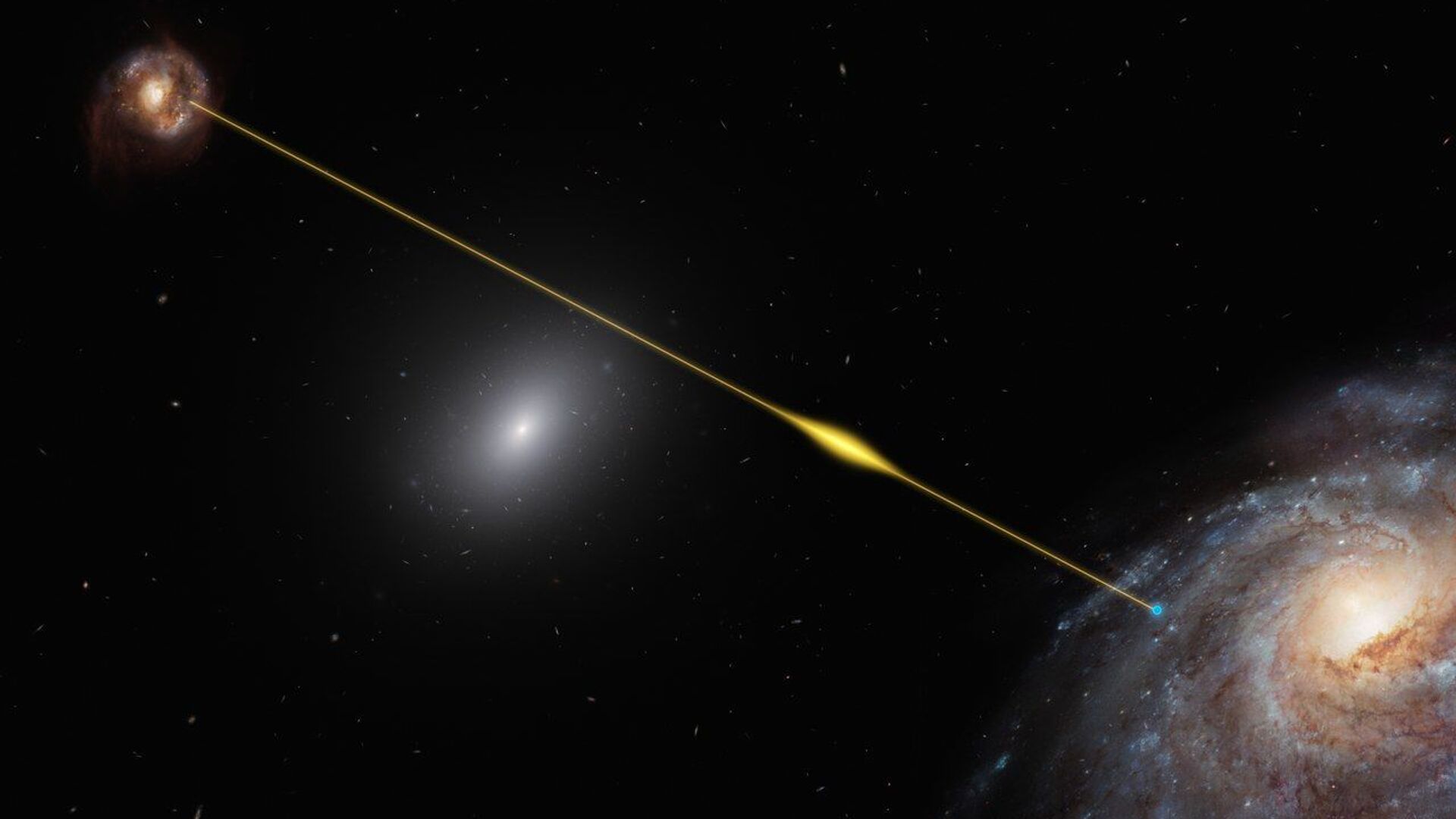https://sputnikglobe.com/20220419/fast-radio-bursts-could-be-caused-by-crumbling-planets-interacting-with-neutron-stars-study-says-1094885873.html
Fast Radio Bursts Could Be Caused by Crumbling Planets Interacting With Neutron Stars, Study Says
Fast Radio Bursts Could Be Caused by Crumbling Planets Interacting With Neutron Stars, Study Says
Sputnik International
The scientific community has long been scratching their heads over bizarre blasts of milliseconds-long fast radio bursts, or FRBs, that erupt far away in space... 19.04.2022, Sputnik International
2022-04-19T11:54+0000
2022-04-19T11:54+0000
2023-04-12T16:57+0000
science & tech
radio waves
space
https://cdn1.img.sputnikglobe.com/img/107832/70/1078327070_0:53:1280:773_1920x0_80_0_0_aa27f44f1dc2d912654c7191e2a77623.jpg
Fast radio bursts in space could be caused by planets interacting with their magnetic host stars, according to a new study published in The Astrophysical Journal.Some of the FRBs repeat themselves, while others only blast once. The new research suggested that the repetitive kinds can be explained by the interactions between the neutron stars and their planets in a highly elliptical orbit.His team has come up with a calculation of what can happen to a planet in a highly elliptical orbit around a neutron star. According to Huang, when the planet and the star come too close to each other, the star's gravity elongates and distorts the planet in what the astronomer described as "tidal pull". This pull is even capable of ripping some small clumps off the planet.Then, the "tidal pull" prompts a massive radiation wind, which is similar to that of our Sun, but more extreme. According to Huang, such interactions can "produce really strong radio emissions". If the radio emission occurs at the same time when a planet clump passes in front of the star from Earth’s perspective, then humans might be able to register it as a FRB.According to another scientists who was not involved in the study, astrophysicist Wenbin Lu of Princeton University, these interactions can even change the planets' orbits.Such changes can also give the astronomers a chance to detect more FRBs and study their nature.The two most famous repeating FRBs are known as 121102 and 180916, with a period of 157 days and 16.35 days, respectively. Earlier studies suggested that the periodicity of the blasts could have been connected with neutron star binary systems.
Sputnik International
feedback@sputniknews.com
+74956456601
MIA „Rossiya Segodnya“
2022
Sputnik International
feedback@sputniknews.com
+74956456601
MIA „Rossiya Segodnya“
News
en_EN
Sputnik International
feedback@sputniknews.com
+74956456601
MIA „Rossiya Segodnya“
Sputnik International
feedback@sputniknews.com
+74956456601
MIA „Rossiya Segodnya“
science & tech, radio waves, space
science & tech, radio waves, space
Fast Radio Bursts Could Be Caused by Crumbling Planets Interacting With Neutron Stars, Study Says
11:54 GMT 19.04.2022 (Updated: 16:57 GMT 12.04.2023) The scientific community has long been scratching their heads over bizarre blasts of milliseconds-long fast radio bursts, or FRBs, that erupt far away in space every now and then. Now, the researchers might have their answer.
Fast radio bursts in space could be caused by planets interacting with their magnetic host stars, according to a new study published in
The Astrophysical Journal.
Some of the FRBs repeat themselves, while others only blast once. The new research suggested that the repetitive kinds can be explained by the interactions between the neutron stars and their planets in a highly elliptical orbit.
“How fast radio bursts are produced is still up for debate,” astronomer Yong-Feng Huang of Nanjing University in China said, cited by
Science News.
His team has come up with a calculation of what can happen to a planet in a highly elliptical orbit around a neutron star. According to Huang, when the planet and the star come too close to each other, the star's gravity elongates and distorts the planet in what the astronomer described as "tidal pull". This pull is even capable of ripping some small clumps off the planet.
Then, the "tidal pull" prompts a massive radiation wind, which is similar to that of our Sun, but more extreme. According to Huang, such interactions can "produce really strong radio emissions". If the radio emission occurs at the same time when a planet clump passes in front of the star from Earth’s perspective, then humans might be able to register it as a FRB.
According to another scientists who was not involved in the study, astrophysicist Wenbin Lu of Princeton University, these interactions can even change the planets' orbits.
“Every orbit, there is some energy loss from the system,” he said. “Due to tidal interactions between the planet and the star, the orbit very quickly shrinks.”
Such changes can also give the astronomers a chance to detect more FRBs and study their nature.
The two most famous repeating FRBs are known as 121102 and 180916, with a period of 157 days and 16.35 days, respectively. Earlier studies suggested that the periodicity of the blasts could have been connected with neutron star binary systems.



